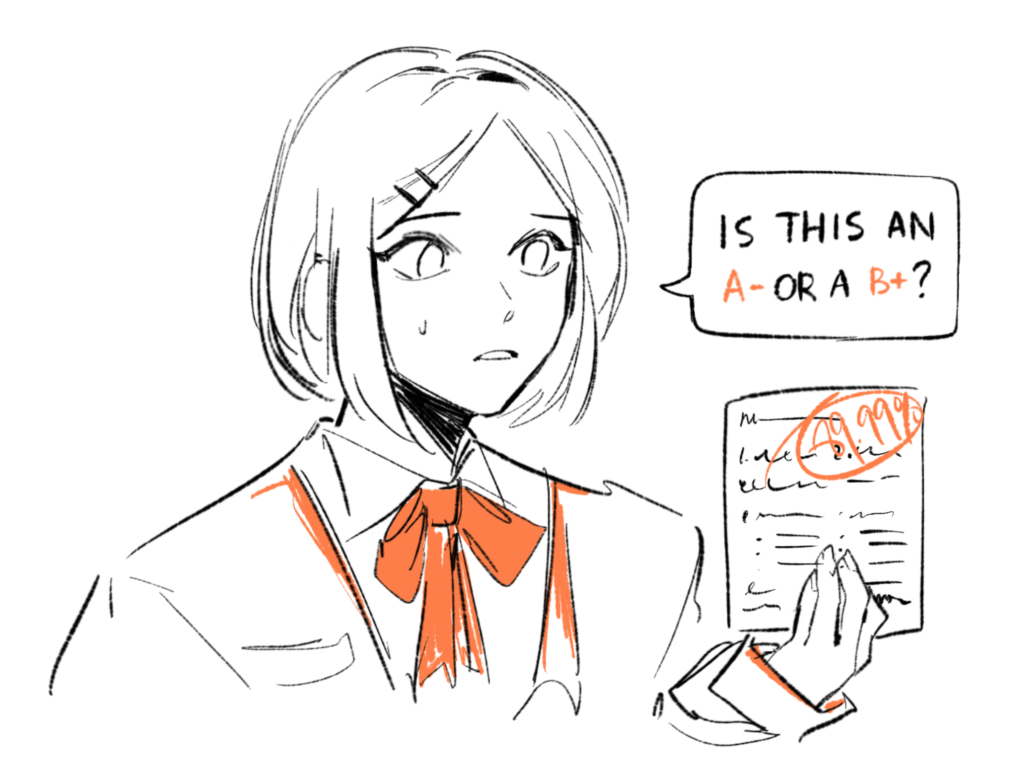The Canvas app plays an oversize role in most students’ daily lives. Upon launching the app, a variety of outcomes unfold. Some courses display grades with suffixes, while others utilize signless letters. Certain teachers round grades, but others maintain the original scores.
Why is it that some teachers choose to count a 93 as an A- while others choose to keep it as an A? The answer is simple: personal preference. The grading scale is meant to be a standardized system, not a personalized one.
These conflicting grading policies contribute to the chaos within a student’s mind. At SHS, where students already grapple with considerable stress, having distinct grading scales and methodologies for each class unnecessarily exacerbates academic pressure.
The purpose of grades is to convey a student’s accomplishment, adequacy, excellence and effort. How can they be accurate if the student is being graded under different criteria for each class?
The grading scale seems like a relatively simple topic — A’s, B’s, C’s and so on. However, some teachers have altered the scale to fit their preferences without considering the negative impact it could have. Yes, different scales have different benefits, but it’s not worth it to individually change them at the expense of inciting cognitive overload in students.
One teacher is willing to round grades, provided that students do their homework, arrive to class on time, participate in class and do well on quizzes.
By contrast, another teacher carries a no-rounding policy in her class.
Students of both teachers struggle to see why one policy works fine in one class but not the other.
Every minor difference in grading policies has an immense impact on students and their mindsets regarding the class. There are roughly 70 teachers here, and many students will end up having about 25 of them by the time they graduate. Students sometimes struggle to retain the various grading rules made by each teacher based on one quick glance at their class syllabus in the beginning of the year, much less grasp reasons for the differences.
When discussing mental health, a prominent topic at SHS, staff members continuously suggest methods to create a calmer mindset in students. MOSAIC sessions and assemblies are often organized for the purpose of finding possible solutions to this problem. The Wellness Center, an on-campus institution, was solely built for managing mental health. These resources suggest listening to music, taking a walk, talking to family, and much more. Though the methods are beneficial, removing an unnecessary stress-causing factor is a far more effective path.
No one grading scale is superior to the others, but the format of the scale is not something that is discussed or debated much. A consistent system, regardless if it has signs behind the letter or not, is critical. Students will gain clarity and be able to put their preserved energy to better causes. Not to mention, implementing a universal grading scale is completely plausible and harmless.
Six out of the 10 students surveyed agreed that the grading system incites stress and negatively impacts their mental health. It is unrealistic to state that changing this will eliminate all problems, but it will help to dilute students’ stress levels.
The trend of unnecessarily complicating tasks for students under the guise of “college preparation” needs to come to an end. This is not to say teachers are to blame but rather the nonuniformity of the grading system.
Implementing a more standardized school wide grading system would enhance students’ academic and cognitive capabilities, enabling them to concentrate on the subject matter of their classes rather than being preoccupied with trivial concerns such as whether a teacher will round up or not.



























